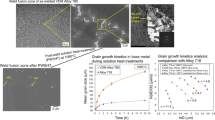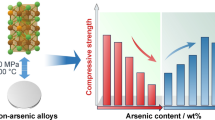Conclusions
The possibility in principle is shown of obtaining pure forsterite by electric-arc melting of natural magnesium orthosilicate.
It was established that the oxides of iron, chromium, silicon, and manganese reduce easily and are concentrated in a ferroalloy the content of which is 6–8%. The product of fusion of dunite is 95–98% forsterite and an insignificant quantity of iron containing siliceous glass.
Parts produced from fused dunite have quality indices significantly exceeding the indices of those produced from fired dunite.
Similar content being viewed by others
Literature cited
P. P. Budnikov, The Technology of Ceramics and Refractories [in Russian], Gosizdat. Lit. po Stro. Mater., Moscow (1955).
A. A. Litvakovskii, Fused Cast Refractories [in Russian], Gosizdat. Lit. po Stro. Mater., Moscow (1959).
I. P. Bardin (ed.), Blast Furnace Production (Handbook) [in Russian], Metallurgizdat, Moscow (1963).
Author information
Authors and Affiliations
Additional information
Translated from Ogneupory, No. 8, pp. 31–34, August, 1985.




